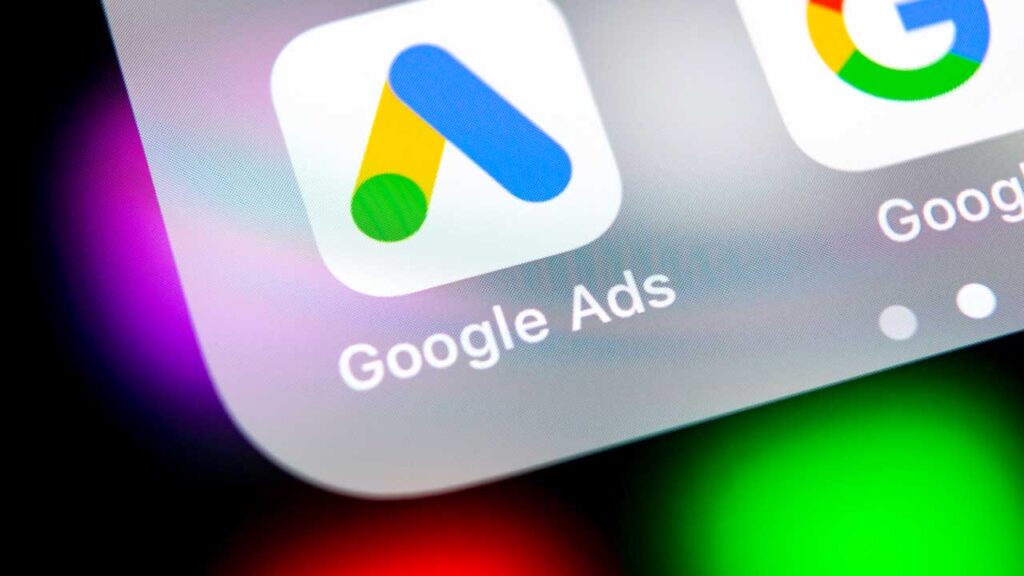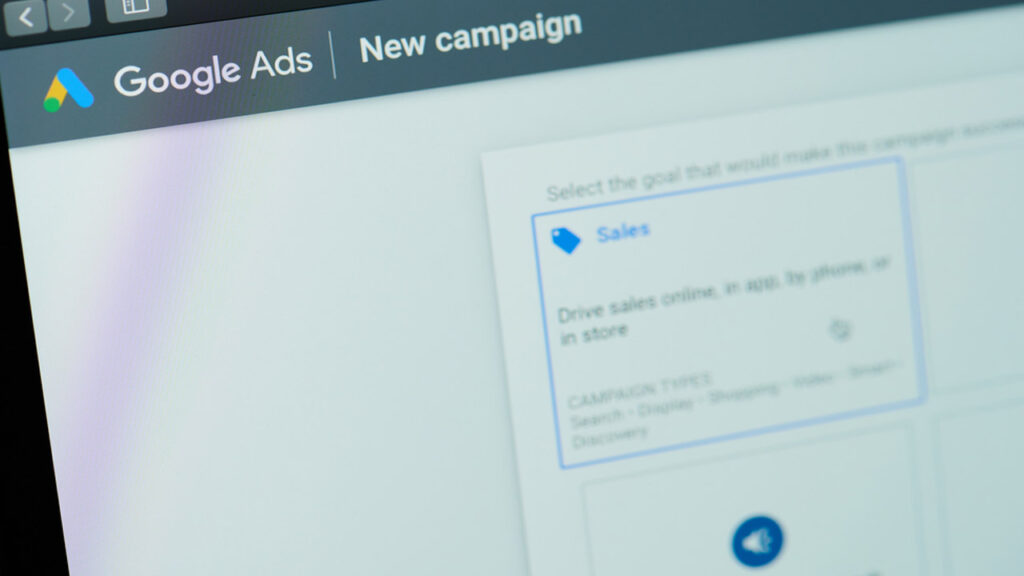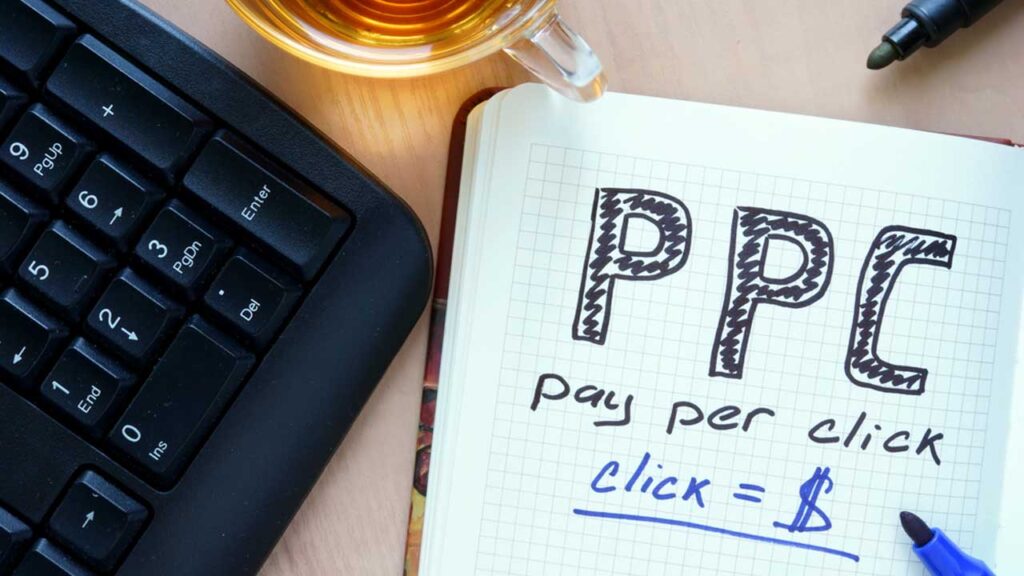Maximizing Profits with Pay Per Click Google: A Comprehensive Strategy Guide
Brett Lewis
Paid Ads - February 13, 2024

Are you looking to understand how Pay Per Click (PPC) on Google can drive targeted traffic to your website and maximize your profits? In this comprehensive strategy guide, we’ll break down the intricacies of Google Ads, the world’s leading pay per click Google platform, and provide you with actionable insights on crafting successful campaigns that connect with your audience and align with your budget. Dive in to discover how to optimize your PPC efforts for maximum ROI.
Key Takeaways
- Google PPC (Pay Per Click) is a cost-effective marketing strategy where advertisers pay only when their ads are clicked, allowing for immediate results, budget control, and precise targeting based on factors like geographical location, demographics, and device type.
- A successful Google PPC strategy requires setting clear campaign goals, choosing the right keywords for targeting, creating structured ad groups, understanding the auction system with Ad Rank and Quality Score, and crafting compelling ad copy and optimized landing pages.
- Advanced Google PPC techniques include utilizing negative keywords for precision targeting, implementing remarketing strategies to re-engage visitors, A/B testing for performance optimization, and analyzing metrics to make data-informed adjustments for scaling successful campaigns.
Understanding Pay Per Click (PPC) on Google

In the ever-expanding ocean of digital marketing, PPC serves as a significant beacon, leading businesses towards their targeted audience amid the waves of abundant online content. Google Ads, the colossus of PPC platforms, allows advertisers to cast their nets wide with the help of a well-crafted ppc ad, with the promise of only paying when an eager click signals a potential catch. Think of it as a bustling marketplace, where every click is a conversation started, a relationship forged, a step closer to a transaction.
The choice of this market is clear-cut considering Google’s extensive reach through google search, one of the most popular search engines, with billions of searches made daily. This provides a myriad of opportunities for businesses to boost their brand visibility and drive targeted traffic to their virtual doorsteps.
The Essence of Google PPC
The core of Google PPC operates like an auction, similar to an art auction where each hand raised by a bidder signifies their readiness to pay for a masterpiece. In this digital gallery, however, the masterpieces are the coveted spots on the search engine results page (SERP), and the artists are the advertisers crafting ads that resonate with their audience’s queries. Google juggles a set of complex formulas behind the velvet curtain, determining which ads deserve the spotlight for any given search—ensuring that only the most relevant, well-crafted ads make it to the stage.
Key Benefits of Using Google PPC
Why choose Google PPC? The allure of immediate results and cost-effectiveness are compelling reasons for businesses looking to boost their web presence. Imagine the ability to launch a campaign and, on the same day, watch as visitors from across the globe dock at your website. But the true magic of PPC lies in its cost structure, including the cost per click cpc:
- You wield the power to set your own budgetary compass
- Ensuring that your ad spend only disperses when someone clicks
- Anchoring your investment to actual interest
How Google PPC Fits into Your Marketing Mix
In the vast marketing mix, Google PPC is the versatile vessel capable of filling gaps left by other channels. Imagine PPC as a speedboat zipping between the slower-moving ships of SEO and content marketing, delivering quick visibility and precise targeting. It’s the nimble craft that can adjust its course instantly, allowing for geographic, demographic, and device targeting, ensuring you reach the right audience at the right time.
When coupled with the steady current of search engine optimization, Google PPC can propel your online presence to new heights, offering a dominating visibility that often eclipses what can be achieved by organic search alone.
Crafting Your Google PPC Strategy

Charting a course through the Google PPC waters requires more than just a map—it demands a compass, a sextant, and a clear destination. This journey begins with a strategy sculpted by clear campaign goals, a treasure map of carefully selected keywords, and the organization of ad groups as if they were the crew of your ship.
Navigating the competitive terrain of search engine marketing and paid search requires strategic planning and agile execution, with a readiness to adapt and steer towards promising opportunities.
Establishing Clear Campaign Goals
Consider your PPC campaign as a quest for hidden treasure, with your goals marking the spot—definite, specific, and challenging. These goals are the stars by which you navigate, guiding every strategy and action you take.
By adopting the perspective of your target audience, you ensure that your objectives resonate with potential customers and lead to conversions. And remember, the journey to treasure is measured not in days, but in milestones; set your goals across various timeframes to track progress and adjust your course as needed.
Selecting the Right Keywords
Keywords serve as guiding points in your PPC campaign, directing your ads towards interested searchers. A successful keyword list is like a meticulously drawn map—detailed, relevant, and ever-evolving. Imagine casting a wide net with broad terms, then refining with relevant keywords to zero in on your target.
With the right balance, your keywords will resonate with your audience, like a siren’s song, drawing them to your ads and ultimately to the treasure that is your offering.
Structuring Ad Groups for Success
Ad groups act as the driving force in your PPC campaign, crucial for steering towards success. Each group should be a fleet, with ads that group related keywords together, steering towards the same destination—your landing pages.
By segmenting your campaign data by ad group, you can pinpoint which sails need mending and which are catching the best winds, driving your campaign forward with precision and efficiency.
Navigating the Google Ads Auction System

The Google Ads auction isn’t a one-off event, instead, it’s a continuous, real-time bidding competition where the reward is visibility amid the vast sea of search results. Understanding this system is akin to a captain knowing the tides; it’s about how Ad Rank and Quality Score can raise or sink your ad’s chances of being seen.
The auction system is where strategy meets opportunity, and with each search, the dice are rolled, the bids are placed, and the winners take their prime positions on the SERP.
Understanding Ad Rank and Its Impact
Ad Rank acts as a guiding light for your ads—indicating their position on the SERP and their visibility to searchers. This rank is the result of a calculated dance between your maximum bid and the Quality Score of your ad. Yet, the highest bid doesn’t always win the day; like a skilled negotiator, Google allows you to pay just enough to outbid the competitor below you, ensuring a cost-effective voyage towards ad prominence.
Mastering Bidding Strategies
Your bidding strategy serves as the guiding force in the PPC landscape, directing your campaign towards your objectives. Whether you’re aiming for brand awareness or maximizing conversions, Google offers a treasure chest of automated strategies to help you find your way.
With bid adjustments, you can fine-tune your spending based on device, time, or audience, allowing for a flexible and targeted approach to ad bidding—ensuring your campaign sails smoothly towards its target.
Quality Score: The Key to Cost-Effective Bidding
Quality Score functions as a navigation tool in the PPC landscape, leading you towards cost-effective bidding and improved ad placement. A high Quality Score is the North Star for advertisers—it signifies relevance, a high likelihood of clicks, and a quality landing page experience. Not only does it reduce the cost per click, but it also improves ad rank, ensuring that your ad reaches its audience without sinking your budget.
To raise your Quality Score, focus on optimizing your campaigns to meet Google’s performance criteria, and watch as your ad climbs the SERP, reaching for the top as if it were the crow’s nest.
Creating Compelling Ad Copy and Landing Pages

As the adage goes, ‘You can lead a horse to water, but you can’t make it drink.’ This holds true for PPC advertising as well—your ad copy and landing pages are the tools that spark interest in what you offer. Crafting ad copy that captures attention is like weaving a captivating story, one that resonates and compels the reader to act.
And once they click, the landing page is your marketplace, where the story unfolds into an experience that guides visitors smoothly through the conversion process. Together, compelling ad copy and optimized landing pages are the twin anchors that secure the success of your PPC campaign.
Writing Ads That Capture Attention
The headline of your ad serves as the leader, capturing attention with its boldness. Including the keyword in the headline is like hoisting your colors high—it immediately signals relevance to the searcher’s quest. And as for the ad copy, it should be the wind in your sails, clear and powerful, propelling the searcher towards action.
Employ language that speaks to the user’s desires, crafting a narrative that not only captures attention but also holds it, like a captain holds the wheel in a storm.
Designing Landing Pages That Convert
Your landing page serves as the final destination—it’s where visitors make the decision to value what you offer or move on. A high-converting landing page is like an island paradise, welcoming visitors with exactly what they’re searching for and making it effortless for them to say ‘yes’ to your offer. It’s not just about aesthetics; it’s about functionality, about creating a seamless transition from the promise of the ad to the fulfillment on the page.
And don’t forget the ‘Thank You’ page—a courteous nod to the customer’s decision and a guiding star for their next steps.
Utilizing Ad Extensions for Enhanced Visibility
Ad extensions function as a magnifying glass for your ad campaign, enhancing its presence on the SERP and offering searchers more routes to your offering. Whether showcasing your location, additional services, or special promotions, ad extensions expand the narrative of your ad, inviting engagement without any extra cost. They are not just additional lines of text; they are opportunities to provide a fuller picture of your business, increasing the chances that a searcher will choose your ad over a sea of others.
Consider them your crew, each member bringing a unique skill to the deck, enhancing the overall strength and appeal of your campaign.
Advanced Google PPC Techniques

Delving into the advanced aspects of Google PPC is akin to exploring uncharted territories—there are new strategies to master and deeper depths to explore. Here, the use of negative keywords, remarketing, and A/B testing become the sophisticated navigational tools that help steer clear of treacherous waters and find new routes to success.
These techniques are not just about setting sail; they’re about fine-tuning your journey, trimming the sails, and adjusting the rigging for optimal speed and efficiency.
Leveraging Negative Keywords for Precision Targeting
Negative keywords act as navigational guides that ensure your PPC campaign doesn’t deviate into irrelevant areas. They prevent your ads from appearing in response to searches that don’t align with your objectives, safeguarding your budget from being squandered on fruitless clicks. Employing negative keywords is a strategic decision, akin to choosing which ports to avoid on a voyage. They must be used judiciously, for too many restrictions can limit your reach, just as avoiding too many ports can lead to missed opportunities.
Keep your negative keyword list updated, like a captain’s log, to refine your targeting and maintain the relevance of your PPC campaigns.
Implementing Remarketing Strategies
Remarketing functions as a guiding signal that leads past visitors back to your site. By setting a tracking course with cookies, you can re-engage those who have already shown interest in your offerings, casting a wider net to recapture those who slipped away. Bid more for those who explored the depths of your site, indicating a deeper interest, and tailor your ads to their journey stage, ensuring your message is as relevant as the beacon that guides ships home.
Frequency capping is the watchful eye that prevents overexposure, ensuring that your ads remain a welcome sight rather than an omnipresent foghorn.
A/B Testing for Continuous Improvement
A/B testing serves as a revealing tool for the actual performance of your ads. Google Ads enables the creation of multiple ads per campaign, allowing you to set sail with different messages and formats to discover which resonates most with your audience. Emotional triggers, when tested against other ad elements, can be powerful currents that pull users towards engagement.
Continuously testing is like adjusting the sails—it’s a relentless pursuit of the most favorable winds that will propel your campaign to its desired destination.
Analyzing and Optimizing PPC Performance
Launching a PPC campaign is a journey of discovery, and performance analysis serves as your navigation tool. By tracking metrics such as clicks, impressions, and conversion rates, you gain insights into your campaign’s performance, allowing you to make data-informed adjustments.
The integration of Google Ads with Google Analytics is like having a first mate on deck, providing you with an expanded view of your campaign’s impact and helping you steer towards more effective optimizations. By linking your Google Ads account, this cycle of analysis and optimization becomes an ongoing process, vital for ensuring your PPC campaign remains afloat and on course.
Tracking Metrics That Matter
To navigate the PPC seas successfully, one must keep a keen eye on the metrics that matter. Analyzing performance data such as the Search terms report gives you a clear view of what’s working and what’s not. Impressions and click-through rates are like the stars and tides—they inform you of the visibility of your ads and the likelihood of engagement.
Utilize UTM parameters to track the performance of your campaigns within Google Analytics, ensuring that you have all the information needed to make informed decisions and adjust your course accordingly.
Making Data-Informed Adjustments
Navigating the PPC landscape isn’t a set-and-forget journey; it demands consistent monitoring and adjustments based on performance data. A profitable PPC campaign is not measured by the size of the waves it rides but by the sales it brings in. This requires a captain’s mindset—regularly refining campaigns based on high-performing keywords, tracking negative keywords, and continuously optimizing landing pages.
Sometimes, consolidating campaigns can provide more data to the algorithm, leading to reduced costs and increased returns. It’s about finding the trade winds that will carry your campaign to success.
Scaling Successful Campaigns
Once you’ve established the profitable paths of your PPC campaign, it’s time to focus on scaling. Here are some tips to help you scale your campaign effectively:
- Identify the campaigns that have proven their worth and allocate more resources to them.
- Beware of expanding too quickly—like a ship taking on too much cargo, it can hinder your journey.
- Scale with caution, ensuring each adjustment maintains or improves your return on investment.
Optimize your targeting settings and bids to capture new territories while keeping an eye on the horizon for changes in the PPC landscape.
Exploring Different Types of Google Ads
The world of Google Ads is vast and varied, with different campaign types enriching the PPC landscape. Each type offers unique benefits that cater to various advertising strategies, whether you’re seeking to dominate search results or make a splash on the Display Network. From the text-based search ads that align with organic search results to the image and video ads that capture the imagination on websites and YouTube, Google Ads provides a fleet of options to help you reach your desired destination.
Let’s set sail and explore the different types of campaigns that Google Ads has in its arsenal.
Search Ads: Connecting with Active Searchers
Search ads are the mainstay of the PPC arsenal, ever ready to connect with active searchers. These Google search ads, which appear alongside organic search results, are the first line of engagement with potential customers. They’re the flags that signal to searchers that what they seek may be just a click away. By effectively utilizing PPC ads, businesses can maximize their visibility on Google search results.
With a clear ‘Ad’ label to distinguish them, search ads offer a direct route to your website, providing a straightforward and effective way to increase visibility and drive traffic.
Display Network: Expanding Your Reach with Image Ads
The Google Display Network serves as a network of connections, linking your ads with a multitude of websites across the digital landscape. Here, your image ads unfurl like banners on the mast, capturing the attention of potential customers as they navigate through different online destinations.
With the ability to appear on websites, apps, and digital platforms, display ads extend your reach beyond the confines of the search engine, serving as a visual reminder of your brand and offerings. Think of them as your emissaries, traveling far and wide to proclaim your message through various ad formats.
Video Ads: Engaging Audiences on YouTube
Video ads act as narrators in the PPC world, creating narratives that draw and captivate audiences on platforms like YouTube. With CPV bidding, you only pay when someone chooses to watch or interact with your ad, ensuring that your investment aligns with genuine interest.
Video campaigns offer an immersive experience, allowing you to showcase your brand in action and connect with viewers on an emotional level. They are the minstrels of your marketing mix, singing the tales of your products and services to a rapt audience.
Diversifying with Other Google Ads Campaign Types
As any experienced marketer knows, diversity is key to a resilient campaign. Google Ads offers a wide array of campaign types to meet every marketer’s needs. Shopping campaigns are like bustling bazaars, displaying your products in rich detail to those with intent to buy. Meanwhile, responsive search ads adapt like chameleons, blending in with user searches and maximizing your ad’s impact.
These varied campaign types give you the flexibility to tailor your strategy, ensuring that whether you’re looking to promote an app or reel in e-commerce sales, you have the right tools at your disposal.
Summary
As we dock back at the harbor, let’s reflect on our journey through the PPC seas. We’ve navigated the basics of Google Ads, plotted courses for successful campaigns, and hoisted sails with compelling ad copy and landing pages. We’ve steered through advanced techniques and analyzed our performance under the stars of key metrics. With a fleet of different Google Ads at our command and the knowledge to diversify our strategies, we are more than ready to embark on new PPC voyages. May the winds of Google Ads propel your business to uncharted successes, and may your profits rise like the tide.
Frequently Asked Questions
What exactly is PPC advertising on Google?
PPC advertising on Google is a form of online advertising where businesses pay a fee every time someone clicks on their ad, and the ads can appear in search results and across the Google Display Network.
How does bidding work in Google Ads auctions?
In Google Ads auctions, advertisers set a maximum bid for their ads, which, along with ad quality, determines ad placement. Quality Score reflects relevance and quality when determining placement.
Can I control how much I spend on Google PPC?
Yes, you can control how much you spend on Google PPC by setting daily budgets and maximum cost-per-click bids. This allows you to have full control over your campaign spending.
What are ad groups in Google PPC?
Ad groups in Google PPC are collections of related ads and keywords within a campaign, helping to organize the campaign by theme and making it easier to manage and optimize.
Why is it important to track PPC campaign performance?
It is important to track PPC campaign performance to understand how well your campaign is doing, identify areas for improvement, and ensure that your efforts are aligned with your business goals. Regular analysis through metrics like clicks, impressions, and conversions is essential for cost-effectiveness.
